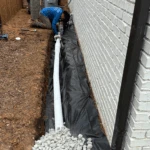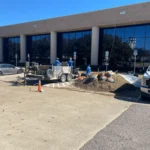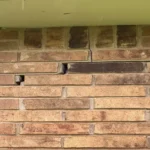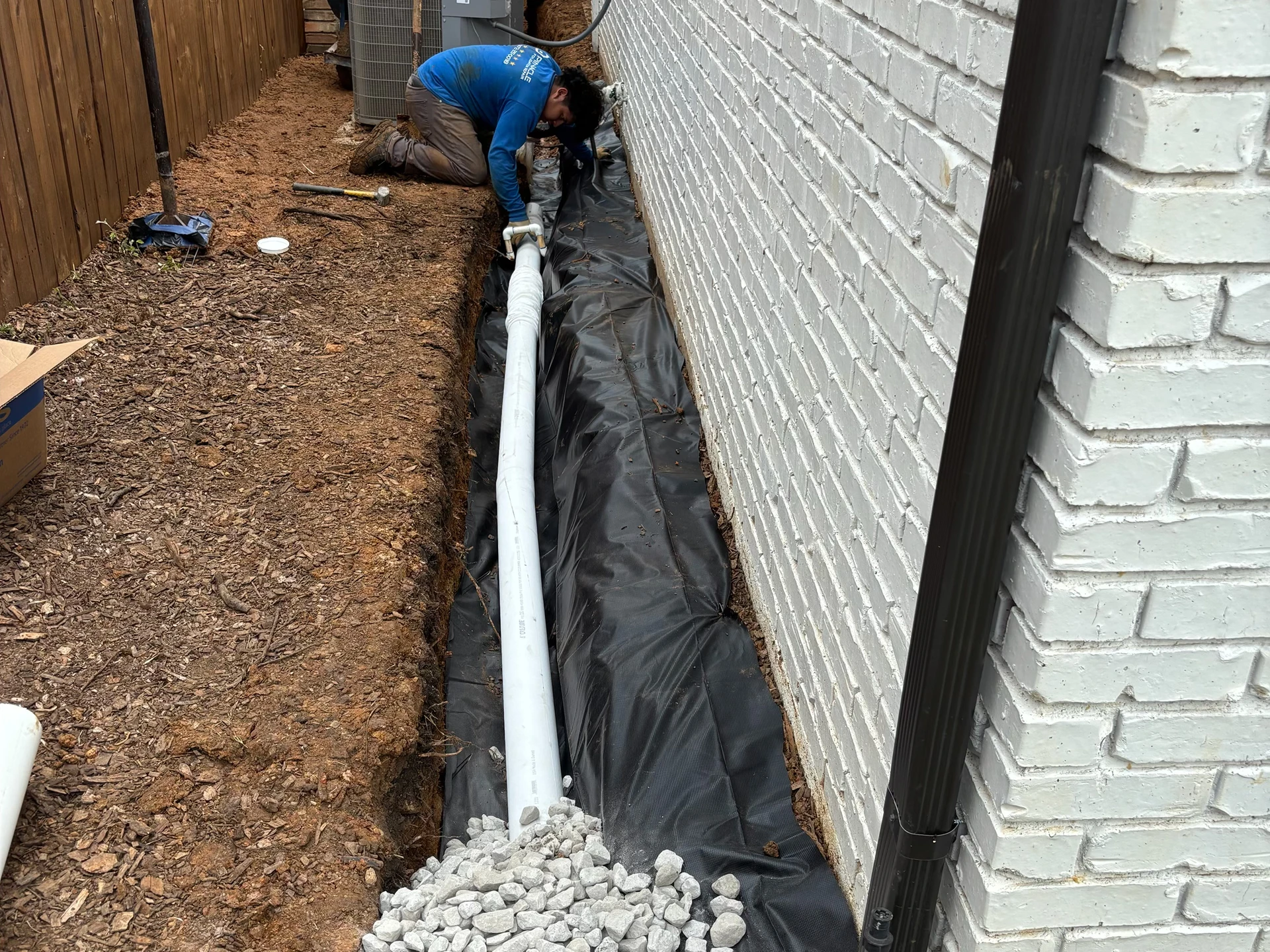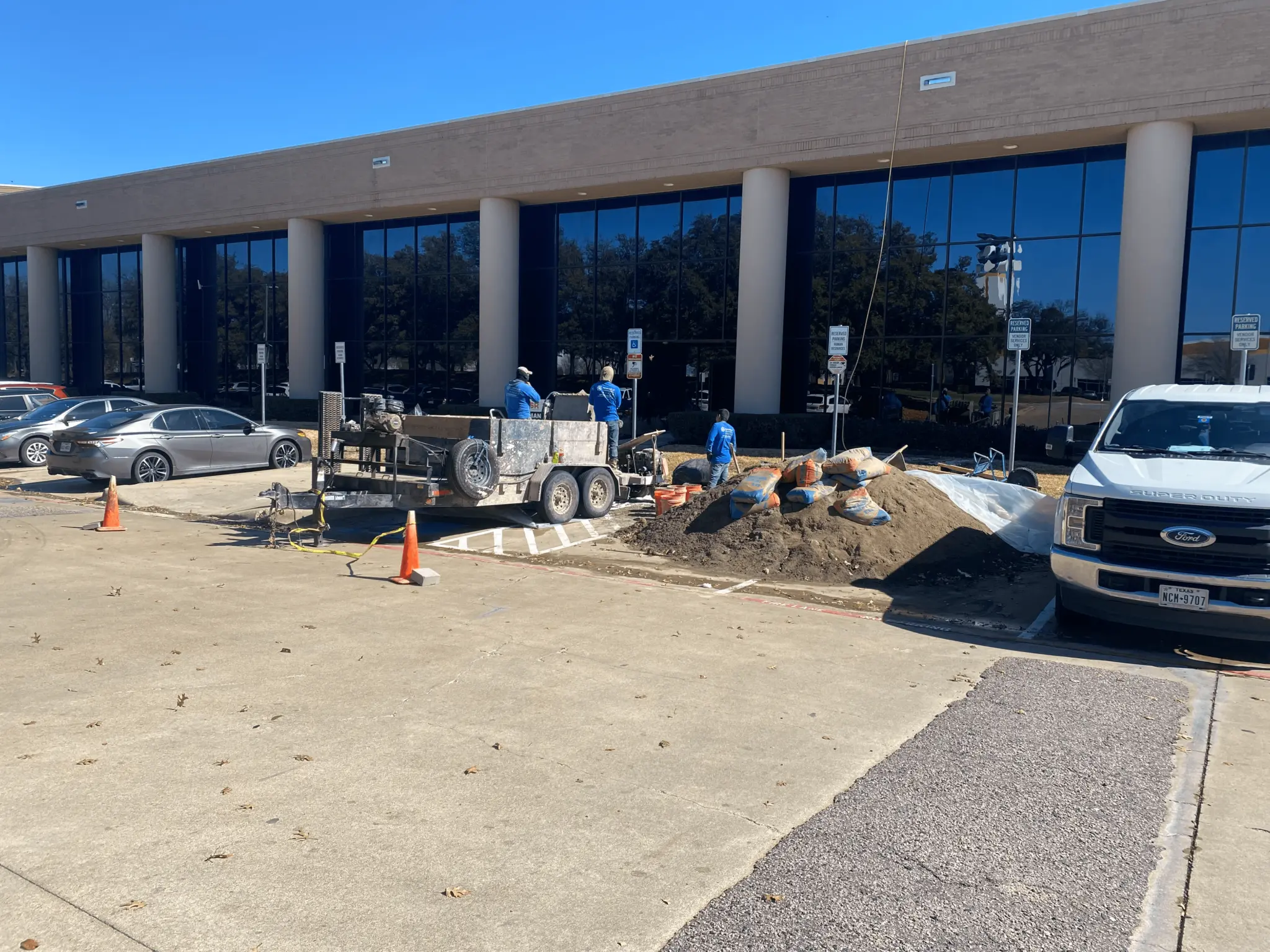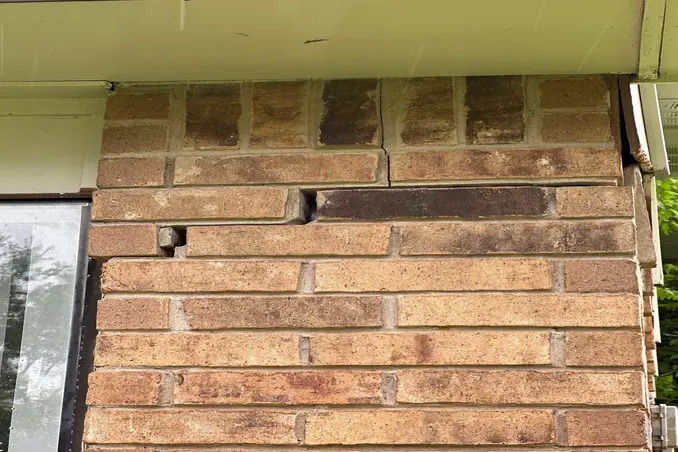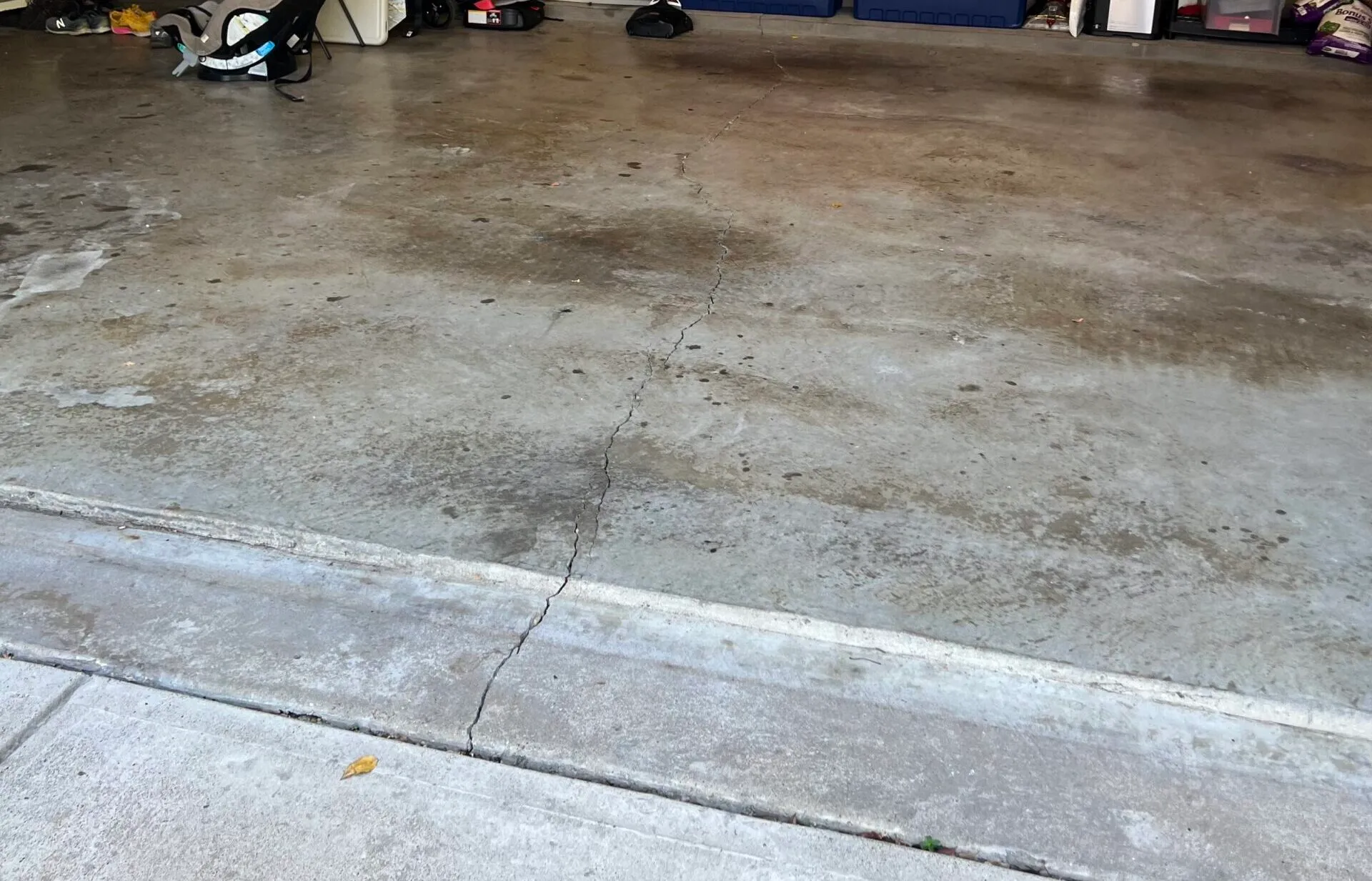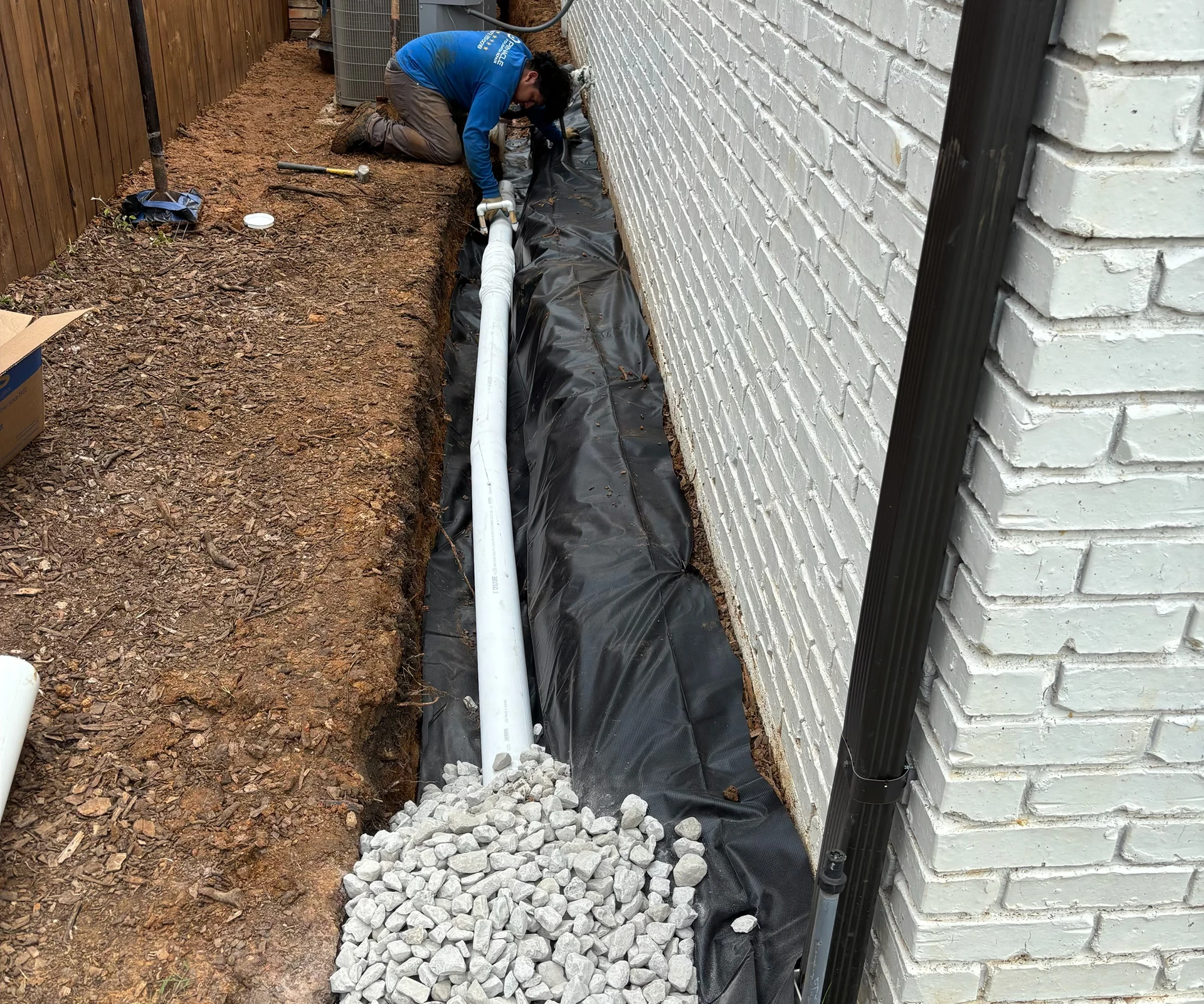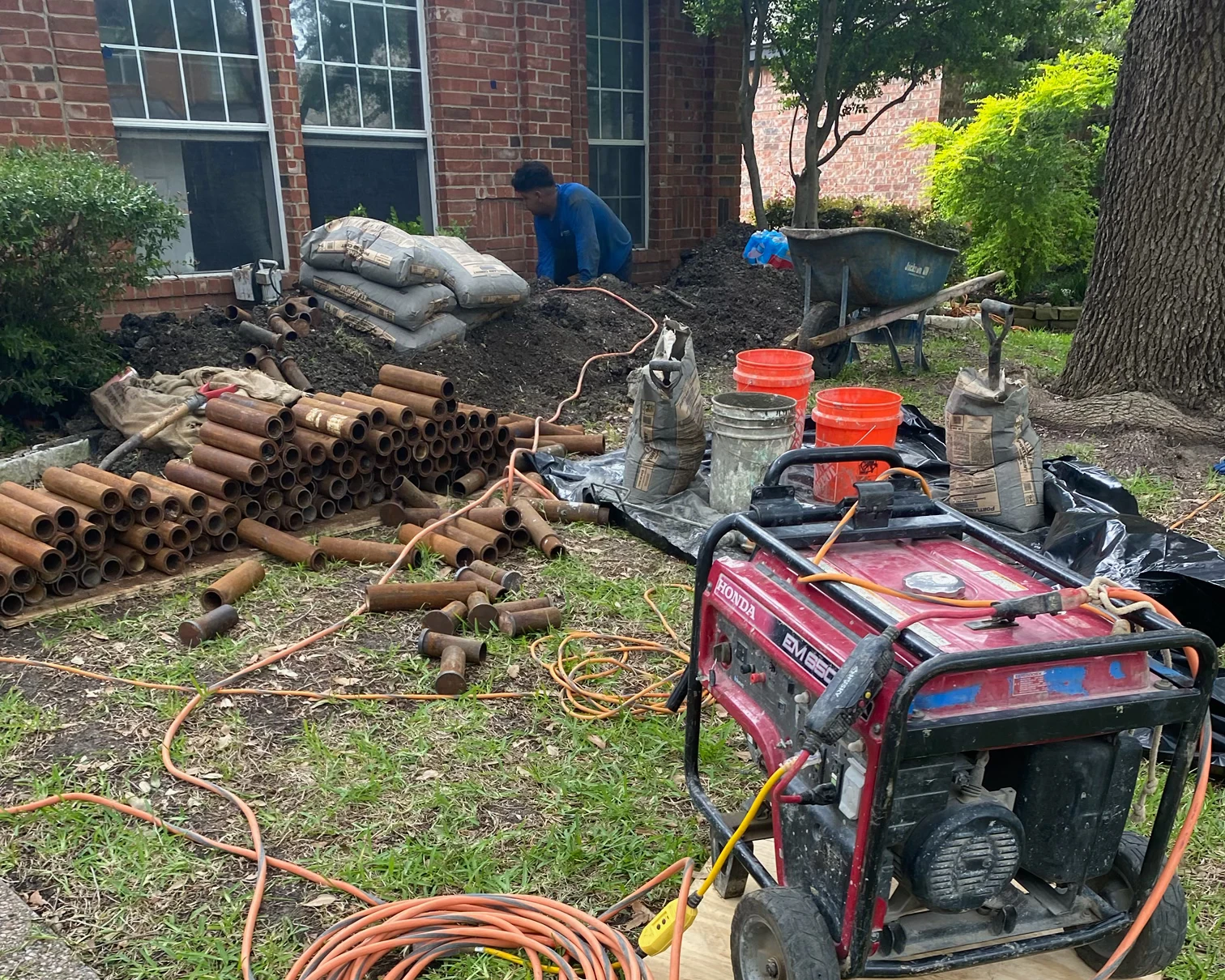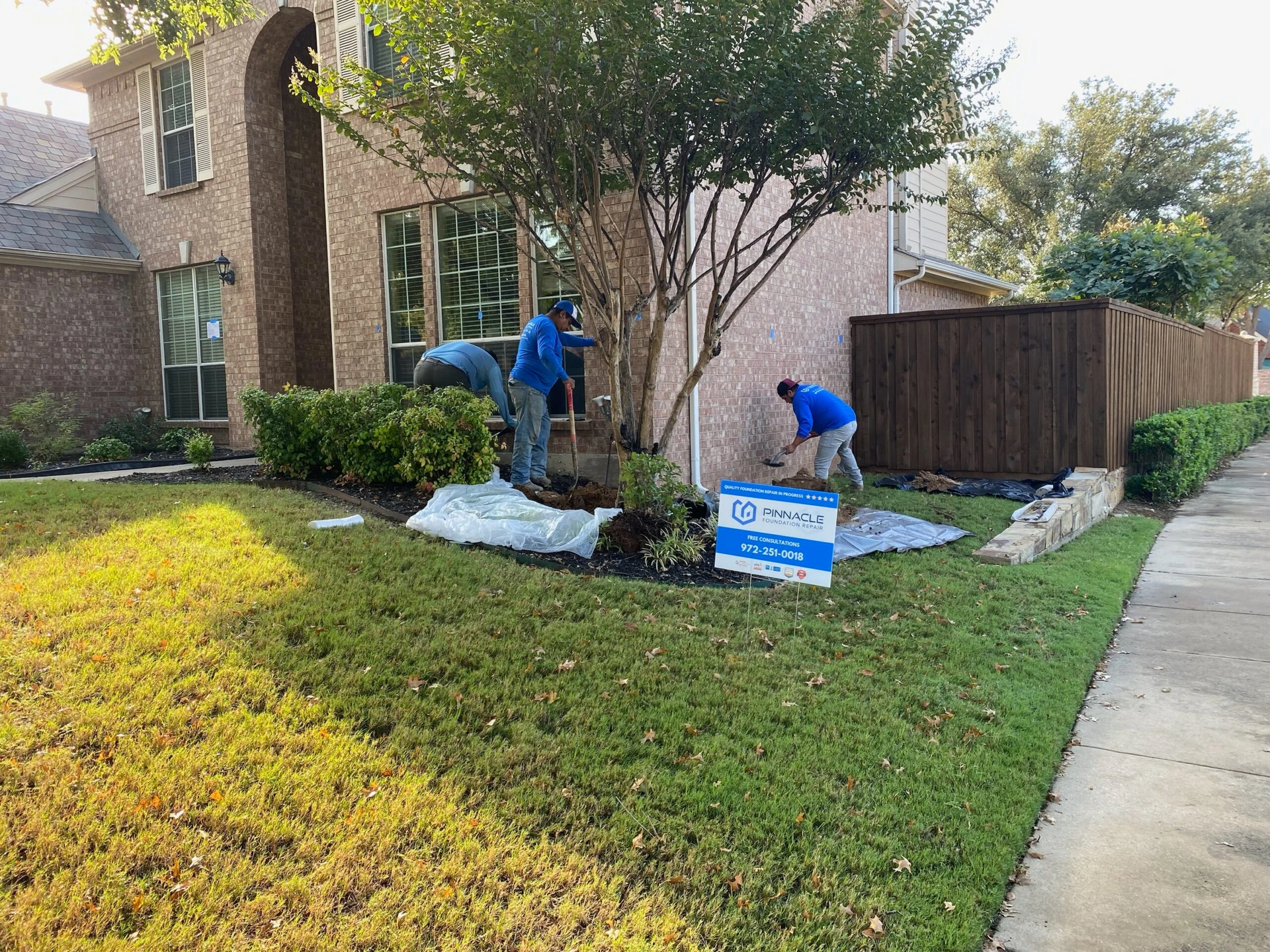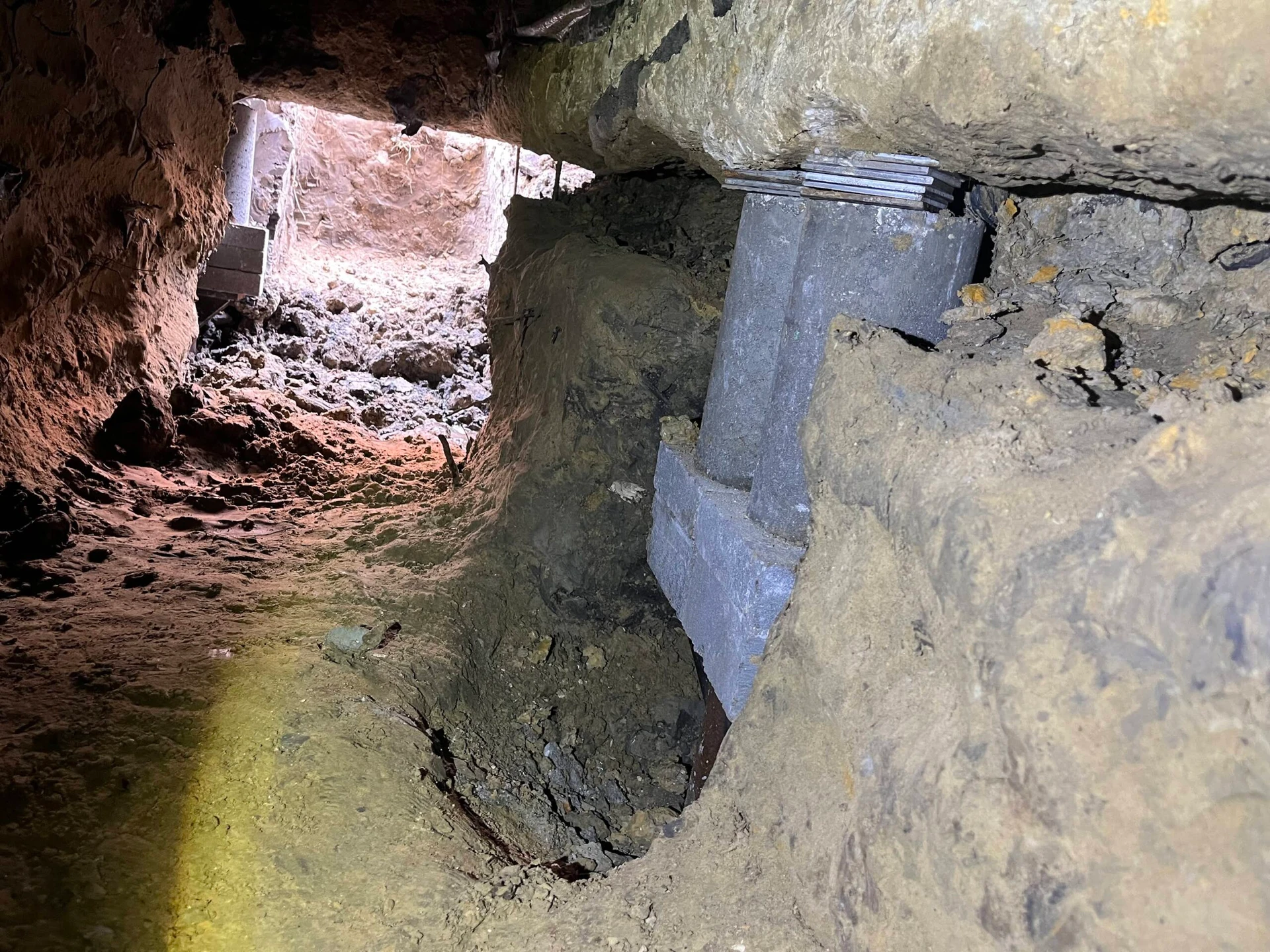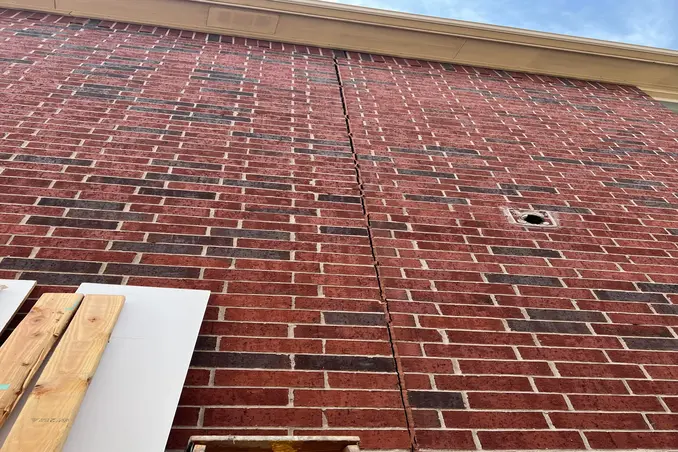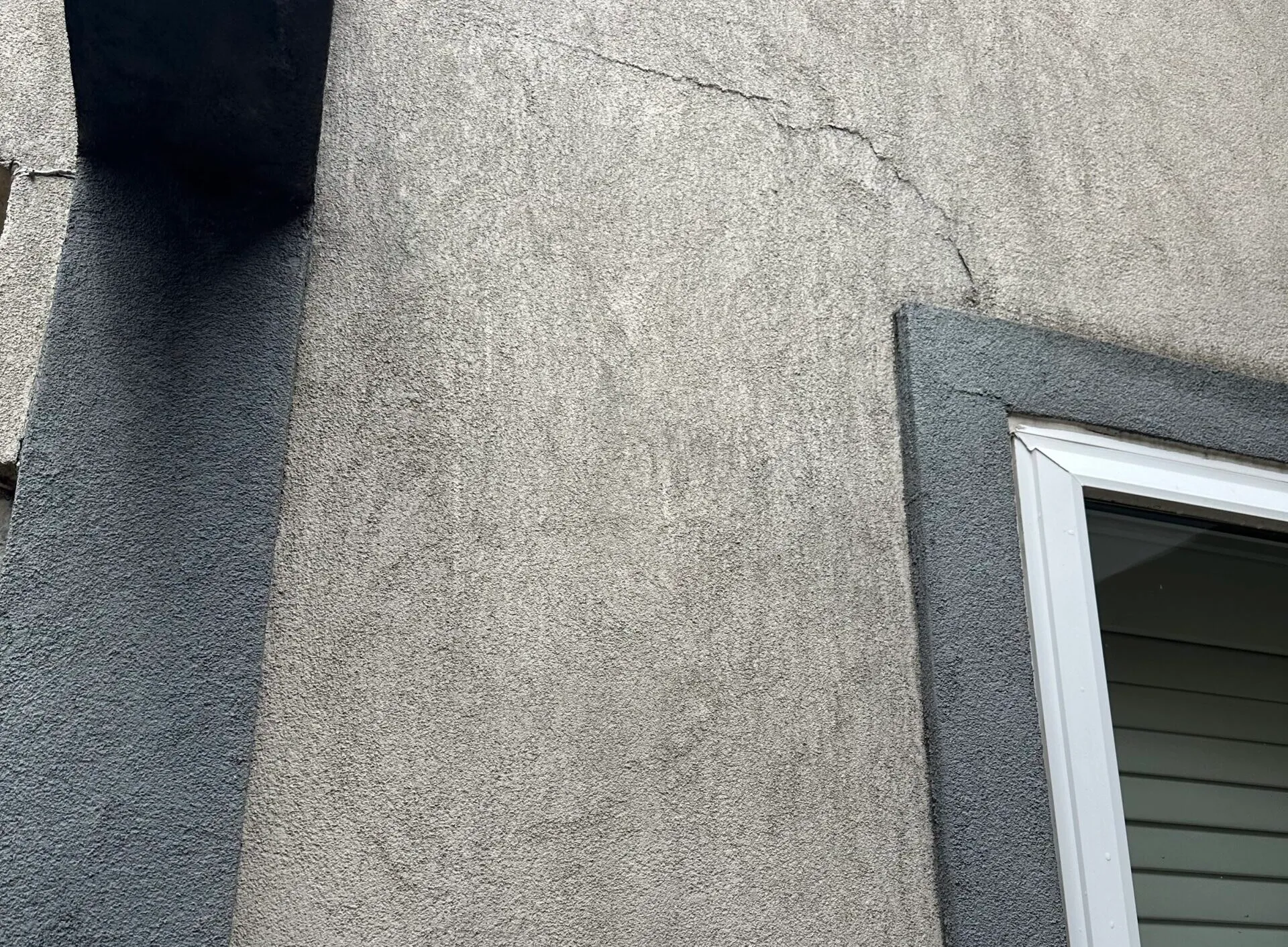Cracks in the driveway. A sidewalk that tilts just enough to trip on. A patio that slopes toward the house after a heavy rain. When concrete sinks or cracks, it’s usually because the ground underneath is no longer stable. In North Texas, where clay soils swell when wet and shrink when dry, it’s a common challenge for homeowners and business owners alike.
Instead of tearing everything out and starting over, there’s a faster, more cost-effective option: concrete lifting. This repair method raises sunken slabs back into place, restoring safety and curb appeal without the hassle and cost of replacement.
What Causes Concrete to Sink or Settle?
Concrete is durable, but it needs stable soil underneath. When that soil moves, the slab above will follow, leading to unsightly, problematic cracks and sinking. This can happen for a few reasons, including:
- Expansive soils: North Texas clay expands when wet and shrinks when dry, creating gaps.
- Soil erosion: Poor drainage or water pooling can wash away the ground under a slab.
- Poor compaction: If the soil wasn’t compacted properly during construction, it may settle years later.
- Heavy loads: Driveways, parking lots, and warehouse floors bear constant stress.
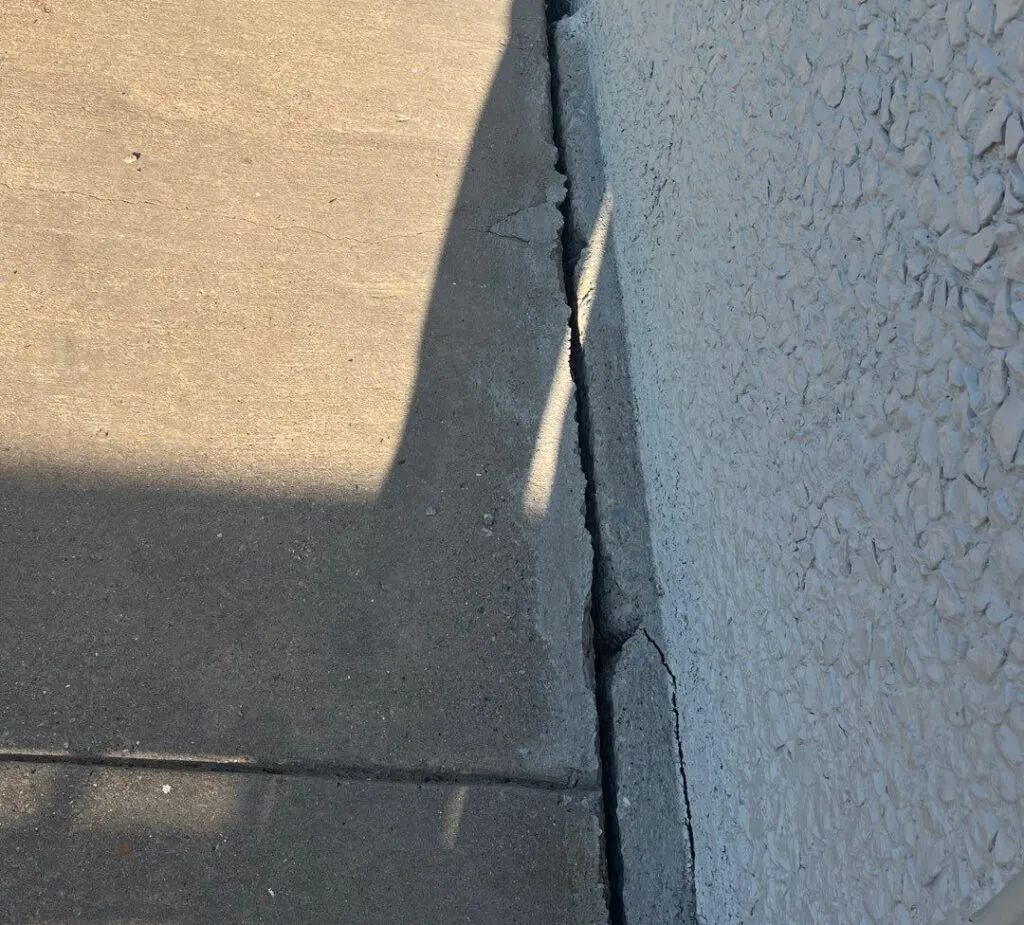
What Is Concrete Lifting?
Concrete lifting raises sunken or uneven slabs by injecting material underneath. It fills the voids that are causing the sunken problem, effectively pushing the concrete up and back into position.
This is a quick and cost-effective solution, especially compared to full replacement. It restores safety, improves appearance, and prevents further damage, all without the hassle of a total replacement.
Methods of Concrete Lifting
Not all slabs require the same repair. It all comes down to soil conditions, load, and budget. The two most common methods include:
Mudjacking
Mudjacking, also called “slabjacking,” involves pumping a mixture of screened topsoil and cement under the slab through small holes. The pressure raises the slab and stabilizes it.
This method is cost-effective and efficient. It works well for driveways, patios, and sidewalks where quick results are needed. At Pinnacle, mudjacking also comes with a warranty, so you can feel confident that the repair will hold up over time.
Polyurethane Foam Injection
Polyurethane foam injection uses a lightweight, expanding foam to lift and support concrete. The liquid foam fills voids under the slab, then hardens into a durable base.
The foam sets quickly, and most surfaces can be walked or driven on in under an hour. Because it adds very little weight to the soil, it helps reduce the risk of future settlement. Our team evaluates each property carefully to determine whether polyurethane or mudjacking is the right solution, based on soil type, load requirements, and long-term performance.
Applications for Concrete Lifting
Concrete lifting is used in both residential and commercial settings. The situations are different, but the process is equally effective.
| Residential Applications | Commercial Applications |
| Driveways | Parking lots |
| Sidewalks & walkways | Warehouse & industrial floors |
| Pool decks | Entryways & accessibility ramps |
| Patios & porches | Sidewalks around offices or retail |
| Garage floors | Loading docks |
Benefits of Concrete Lifting
So, why do most property owners choose lifting instead of replacing concrete? The benefits are clear, and they go beyond just saving money. Lifting is designed to protect both your property and your peace of mind:
- Cost savings: Concrete lifting typically costs at least 50% less than replacement, making it budget-friendly for both homeowners and businesses. That difference can mean thousands of dollars in savings compared to a full tear-out and repour.
- Time efficiency: Most projects can be completed in just a few hours, and surfaces are often usable the same day. Replacement can take days or even weeks because new concrete needs time to cure.
- Minimal disruption: No need to rip out and dispose of large slabs, which keeps mess and downtime to a minimum. For businesses, this means staying open and avoiding costly interruptions.
- Environmentally friendly: By reusing existing slabs, lifting reduces waste and conserves materials. It’s a sustainable repair option that avoids filling landfills with broken concrete.
- Restores property value: Smooth, level surfaces not only look better but also prevent accidents, boosting curb appeal and long-term value. For businesses, this also reduces liability risks tied to uneven walkways or parking lots.
Signs You Might Need Concrete Lifting
Concrete problems often start small: a little hairline crack here, a slight dip there. But these issues rarely stay small. As the soil shifts, cracks widen, slabs tilt further, and repairs become more complicated — and more expensive.
Here are the most common signs it’s time to schedule an inspection:
- Cracks across driveways, patios, or sidewalks
- Trip hazards from uneven slabs
- Water pooling in low areas
- Misaligned structures like garage doors, gates, or fences
- Gaps between concrete slabs and the foundation
If you notice any of these signs, don’t wait for them to get “bad enough” to repair. Addressing them early prevents larger structural concerns and helps you avoid the cost of full slab replacement later.
Concrete Lifting vs. Replacement
When concrete is uneven, you may debate whether a replacement is the better choice. In many cases, lifting is faster, less expensive, and just as effective.
Of course, it ultimately depends on the specifics of the problem. Generally speaking, lifting is best if the slab is intact but uneven. Replacement is often the better choice if the concrete is severely cracked, crumbling, or structurally unsound.
At Pinnacle, we’ll always give you an honest evaluation so you can make the best decision.
Preventative Care After Lifting
Concrete lifting restores your slabs, but preventive measures ensure they stay level for years to come. The soil under your home or business will continue to expand, contract, or erode as seasons change. Without simple maintenance, the same issues that caused your concrete to sink before can cause it to settle again.
So, take steps to prevent recurrence. This includes:
- Proper drainage to keep water from washing out soil.
- Regular inspections to catch small shifts before they worsen.
- Sealants to protect against moisture intrusion.
- Foundation maintenance to address soil movement at the source.
These actions help protect your investment. A little attention to drainage and routine checks now can save you from repeating the repair later.
Ready to Fix Your Uneven Concrete? Let’s Get Started
Uneven concrete won’t fix itself — and the longer it’s left alone, the worse it gets. Concrete lifting gives you a fast, lasting solution without the cost and disruption of full replacement.
At Pinnacle Foundation Repair, we’ve spent three generations helping Texans protect their homes and businesses from shifting soils and sinking slabs. With more than 2,000 five-star reviews, we’re the team you can trust to give you an honest answer and the right repair.
Book your free foundation evaluation today and get your concrete back where it belongs.



